This year’s International Women’s Day (IWD) focuses on innovation and technology for gender equality. This cause aligns closely with our mission as a charity: to enable young people to realise their full potential through the power of computing and digital technologies. An important part of our mission is to shift the gender balance in computing education.
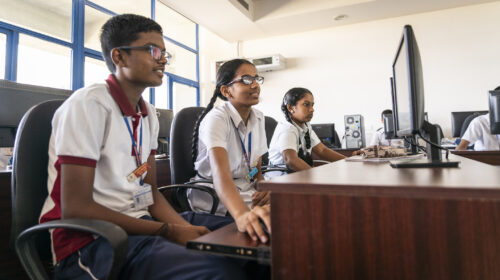
Gender inequality in the digital and computing sector
As the UN Women’s announcement for IWD 2023 says: “Growing inequalities are becoming increasingly evident in the context of digital skills and access to technologies, with women being left behind as the result of this digital gender divide. The need for inclusive and transformative technology and digital education is therefore crucial for a sustainable future.”



According to the UN, women currently hold only 2 in every 10 science, engineering, and information and communication technology jobs globally. Women are a minority of university-level students in science, technology, engineering, and mathematics (STEM) courses, at only 35%, and in information and communication technology courses, at just 3%. This is especially concerning since the WEF predicts that by 2050, 75% of jobs will relate to STEM.
We see this situation reflected in England: computer science is the secondary school subject with the largest gender gap at A level, with girls accounting for only 15% of students. That’s why over the past three years, we have run a research programme to trial ways to encourage more young women to study Computer Science. The programme, Gender Balance in Computing, has produced useful insights for designing equitable computing education around the world.
Who belongs in computing?
The UN says that “across countries, girls are systematically steered away from science and math careers. Teachers and parents, intentionally or otherwise, perpetuate biases around areas of education and work best ‘suited’ for women and men.” There is strong evidence to suggest that the representation of women and girls in computing can be improved by introducing them to computing role models such as female computing students or women in tech careers.
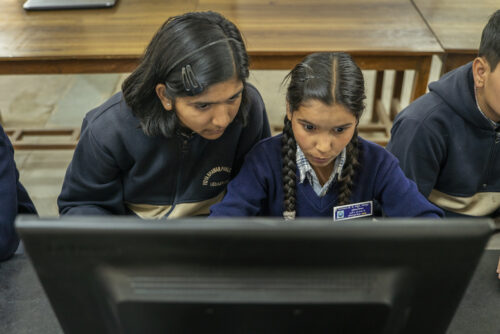
Presenting role models was central to the Belonging trial in our Gender Balance in Computing programme. One arm of this trial used resources developed by WISE called My Skills My Life to explore the effect of introducing role models into computing lessons for primary school learners. The trial provided opportunities for learners to speak to women who work in technology. It also offered a quiz to help learners identify their strengths and characteristics and to match them with role models who were similar to them, which research shows is more effective for increasing learners’ confidence.
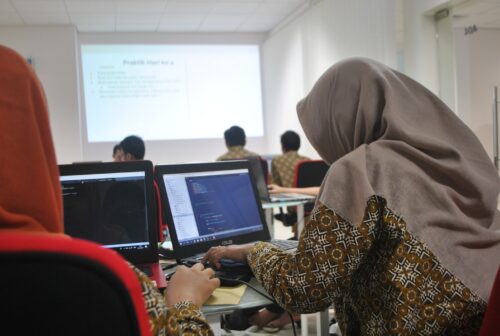
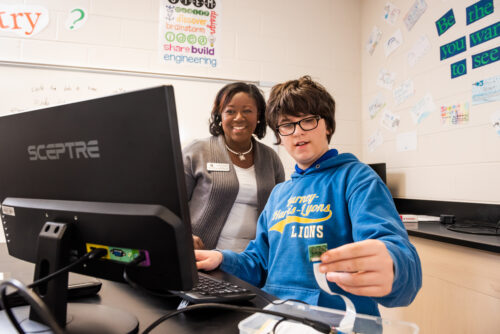
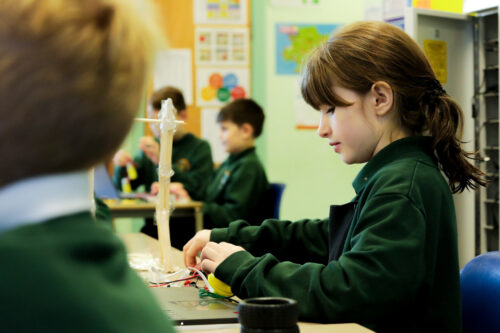
Teachers who used the resources reported learners’ increased understanding of the types and range of technology jobs, and a widening of learners’ career aspirations.
“Learning about computing makes me feel good because it helps me think more about what I want to be.” — Primary school learner in the Belonging trial
“When [the resources were] showing all of the females in the jobs, nobody went ‘Oh, I didn’t know that a female could do that’, but I think they were amazed by the role of jobs and the fact it was all females doing it.“ — Primary school teacher in the Belonging trial
Learning together to give everyone a voice
When teachers and students enter a computing classroom, they bring with them diverse social identities that affect the dynamics of the classroom. Although these dynamics are often unspoken, they can become apparent in which students answer questions or succeed visibly in activities. Without intervention, a dominant group of confident speakers can emerge, and students who are not in this dominant group may lose confidence in their abilities. When teachers set collaborative learning activities that use defined roles or structured discussions, this gives a wider range of students the opportunity to speak up and participate.

Pair programming is one such activity that has been used in research studies to improve learner attitudes and confidence towards computing. In pair programming, one learner is the ‘driver’. They control the keyboard and mouse to write the code. The other learner is the ‘navigator’. They read out the instructions and monitor the code for errors. Learners swap roles regularly, so that both can participate equitably. The Pair Programming trial we conducted as part of Gender Balance in Computing explored the use of this teaching approach with students aged 8 to 11. Feedback from the teachers showed that learners found working in structured pairs engaging.
“Even those who are maybe a little bit more reluctant… those who put their hands up today and said they still prefer to work independently, they are still all engaging quite clearly in that with their pair and doing it really, really well. However much they say they prefer working independently, I think they clearly showed how much they enjoy it, engage with it. And you know they’re achieving with it — so we should be doing this.” – Primary school teacher in the Pair Programming trial
– Werbung –
Another collaborative teaching approach is peer instruction. In lessons that use peer instruction, students work in small groups to discuss the answer to carefully constructed multiple choice questions. A whole-class discussion then follows. In the Peer Instruction trial with learners aged 12 to 13 in our Gender Balance in Computing programme, we found that this approach was welcomed by the learners, and that it changed which learners offered answers and ideas.
“I prefer talking in a group because then you get the other side of other people’s thoughts.” – Secondary school learner (female) in the Peer Instruction trial
“[…] you can have a bit of time to think for yourself then you can bounce ideas off other people.” – Secondary school learner (male) in the Peer Instruction trial
“I was very pleased that a lot of the girls were doing a lot of the talking.” – Secondary school teacher in the Peer Instruction trial
We need to do more, and sooner
Our Gender Balance in Computing research programme showed that no single intervention we trialled significantly increased girls’ engagement in computing or their intention to study it further. Combining several of the approaches we tested may be more impactful. If you’re part of an educational setting where you’d like to adopt multiple approaches at the same time, you can freely access the materials associated with the research programme (see our blog posts about the trials for links).

The research programme also showed that age matters: across Gender Balance in Computing, we observed a big difference in intent to study Computing between primary school and secondary school learners (data from ages 8–11 and 12–13). Fewer secondary school learners reported intent to study the subject further, and while this difference was apparent for both girls and boys, it was more marked for girls.
This finding from England is mirrored by a study the UN Women’s Gender Snapshot 2022 refers to: “A 2020 study of Filipina girls demonstrated that loss of interest in STEM subjects started as early as age 10, when girls began perceiving STEM careers as male-dominated and believing that girls are naturally less adept in STEM subjects. The relative lack of female STEM role models reinforced such perceptions.” That’s why it’s necessary that all primary school learners — no matter what their gender is — have a successful start in the computing classroom, that they encounter role models they can relate to, and that they are supported to engage in computing and creating with technology by their parents, teachers, and communities.
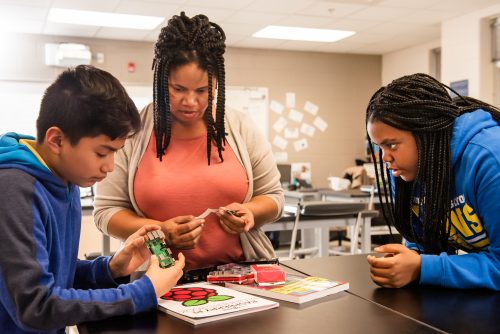
The Foundation’s vision is that every young person develops the knowledge, skills, and confidence to use digital technologies effectively, and to be able to critically evaluate these technologies and confidently engage with technological change. While making changes inside the computing classroom will be beneficial for gender equality, this is just one aspect of building an equitable digital future. We all need to contribute to creating a world where innovation and technology support gender equity.
What do you think is needed?
In all our work, we make sure gender equity is at the forefront, whether that’s in programmes we run for young people, in resources we create for schools, or in partnerships we have, such as with Pratham Education Foundation in India or Team4Tech and Kenya Connect in Wamunyu, Kenya. Computing education is a global challenge, and we are proud to be part of a community that is committed to making it equitable.
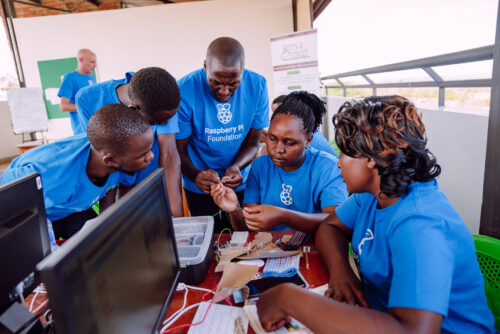
This IWD, we invite you to share your thoughts on what equitable computing education means to you, and what you think is needed to achieve it, whether that’s in your school or club, in your local community, or in your country.
Website: LINK
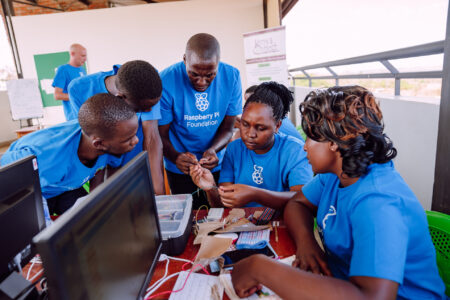
Schreibe einen Kommentar
Du musst angemeldet sein, um einen Kommentar abzugeben.